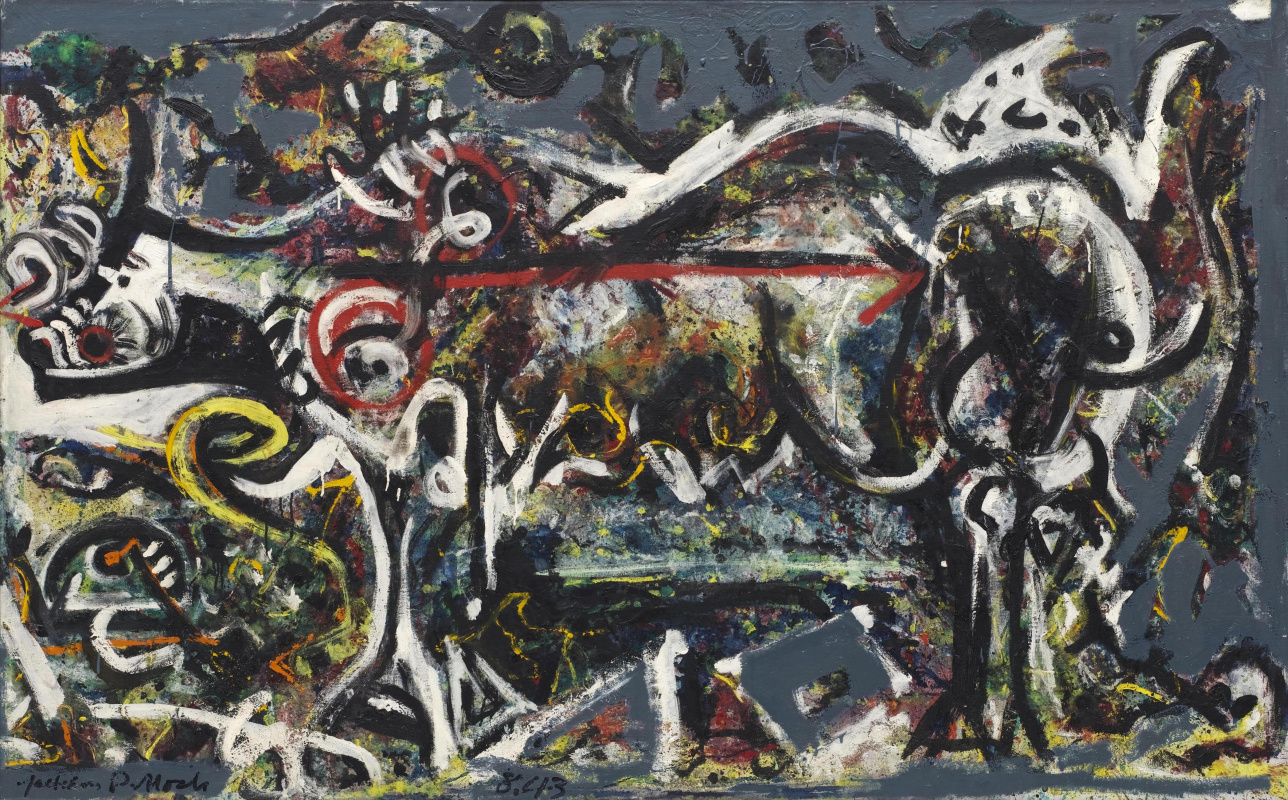log in
Enter site
Login to use Arthive functionality to the maximum
Wolf
Jackson Pollock • Painting, 1943, 106.4×170.2 cm
Description of the artwork «Wolf»
The work of Jackson Pollock can be divided into three periods. At the beginning of his artistic career, he mostly wrote in the style of realism, albeit with a fair amount expressive (one of the most famous of his works of that period – "The West", 1934). After a four-month stay in a new York psychiatric hospital for alcoholics in 1938, the artist turned to abstract art and surrealism. And finally, the third period came after the invention of the "drip" technique in the late 40's. Canvas "She-wolf" refers to the second period when Pollock are seriously interested in the ideas of psychoanalysis and Jungian archetypes and drew inspiration from Indian mythology, creating an image of the artist-mystic, a shaman with a brush, prints on canvas the mysterious symbols and images of totem animals.
"She-wolf" was first presented to the public at the first exhibition of Jackson Pollock in 1943. The plot saw the reference to the legend about the founders of Rome, Romulus and Remo, reared by a she-wolf. However, the artist himself has refused to comment on this, and other works. He only said that this picture "is there because I was supposed to draw". And added: "Any attempt on my part to say anything about it, any attempt to explain the inexplicable can only destroy".
The wolf is a powerful feminine archetype and strong mythological image, sung in a variety of American folk tales and legends perpetuated and, in particular, in the famous book "Running with the wolves" by Clarissa Estes Pinkola. "She-wolf" Pollock, written in the dark tones of the rough strokes of black and white paint, searchingly staring at the viewer through the canvas covering the pattern of color symbols and hieroglyphic hints, inspires an almost primitive awe of the force of nature is meaningful and inexplicable.
Author: Eugene Sidelnikov
"She-wolf" was first presented to the public at the first exhibition of Jackson Pollock in 1943. The plot saw the reference to the legend about the founders of Rome, Romulus and Remo, reared by a she-wolf. However, the artist himself has refused to comment on this, and other works. He only said that this picture "is there because I was supposed to draw". And added: "Any attempt on my part to say anything about it, any attempt to explain the inexplicable can only destroy".
The wolf is a powerful feminine archetype and strong mythological image, sung in a variety of American folk tales and legends perpetuated and, in particular, in the famous book "Running with the wolves" by Clarissa Estes Pinkola. "She-wolf" Pollock, written in the dark tones of the rough strokes of black and white paint, searchingly staring at the viewer through the canvas covering the pattern of color symbols and hieroglyphic hints, inspires an almost primitive awe of the force of nature is meaningful and inexplicable.
Author: Eugene Sidelnikov



